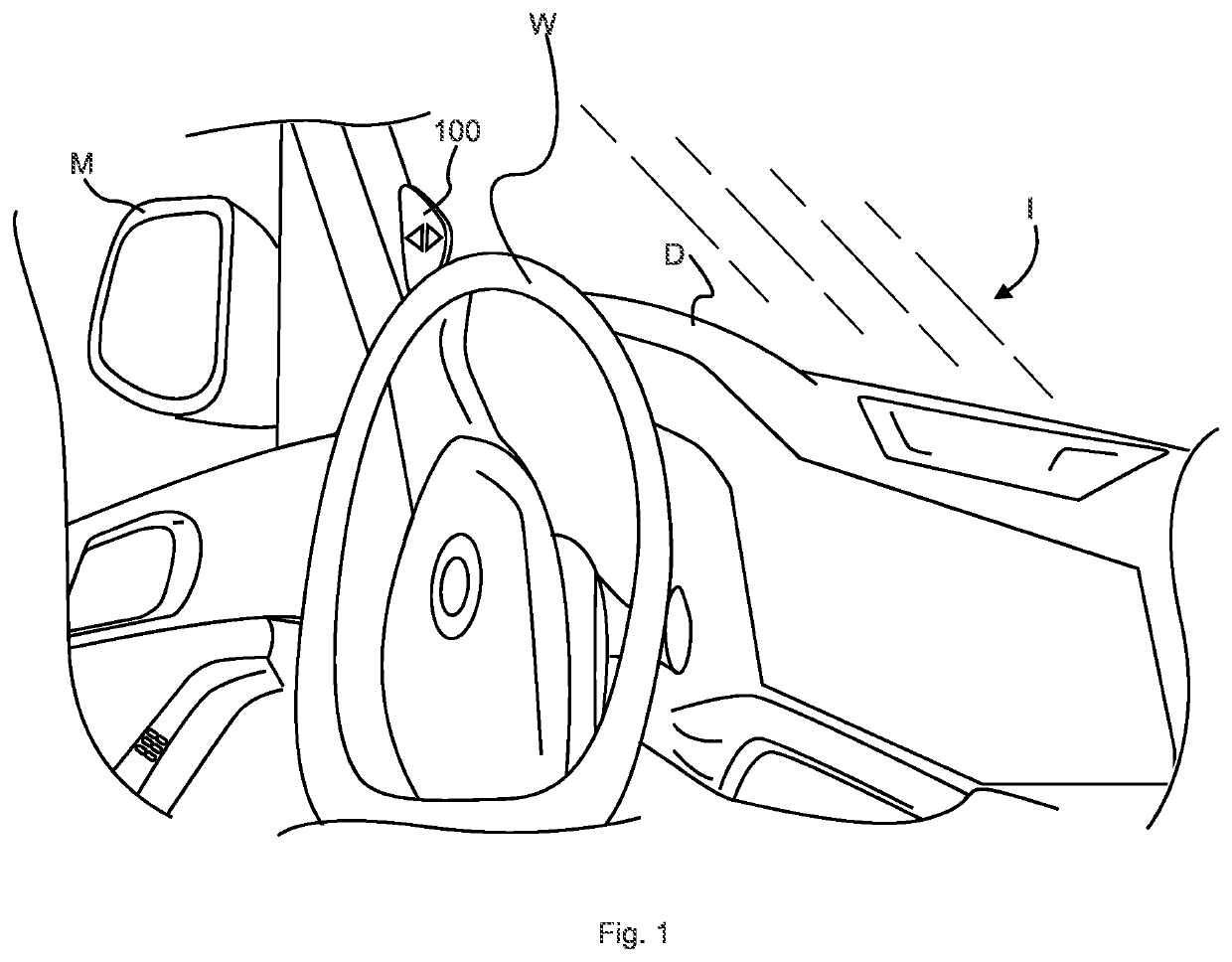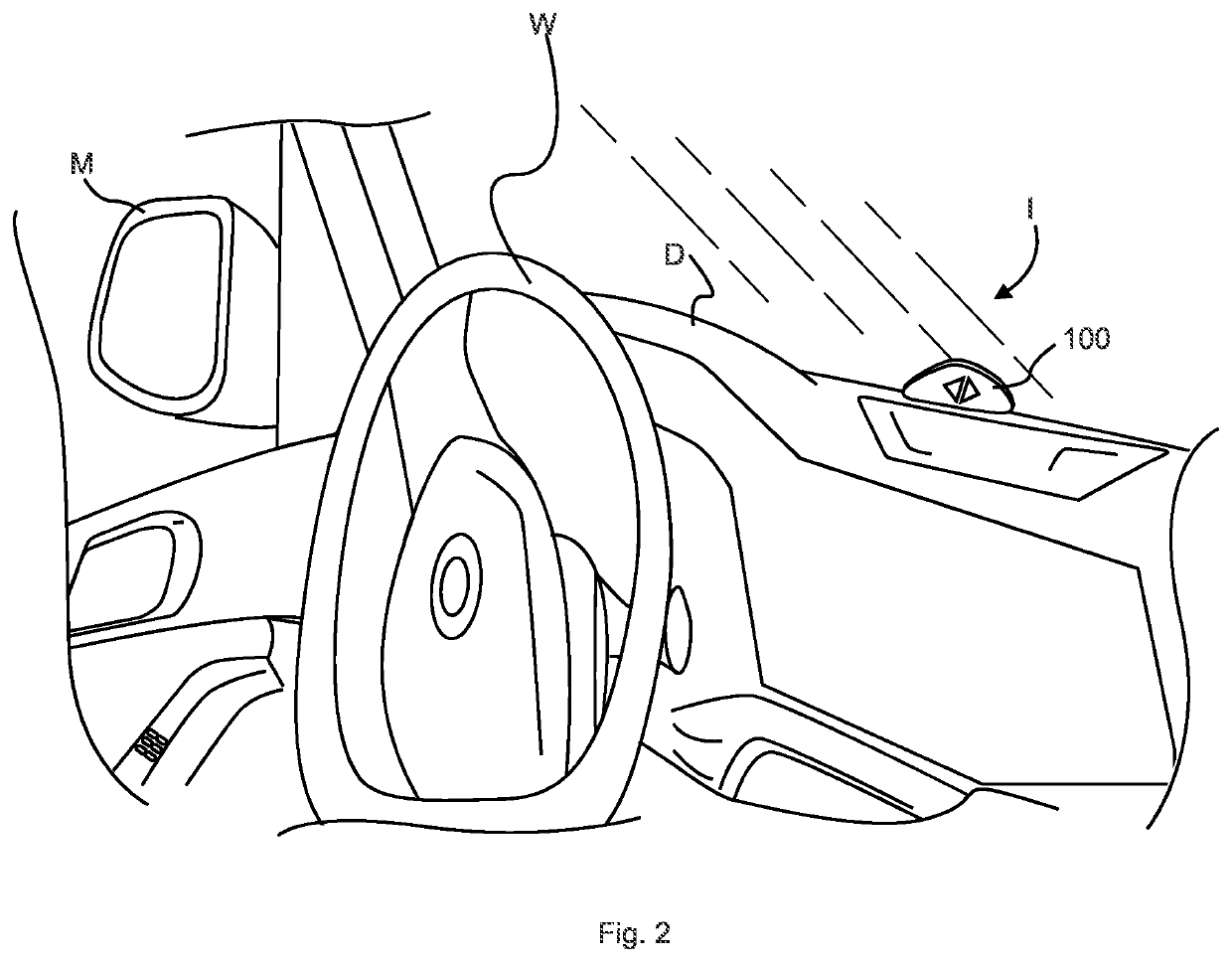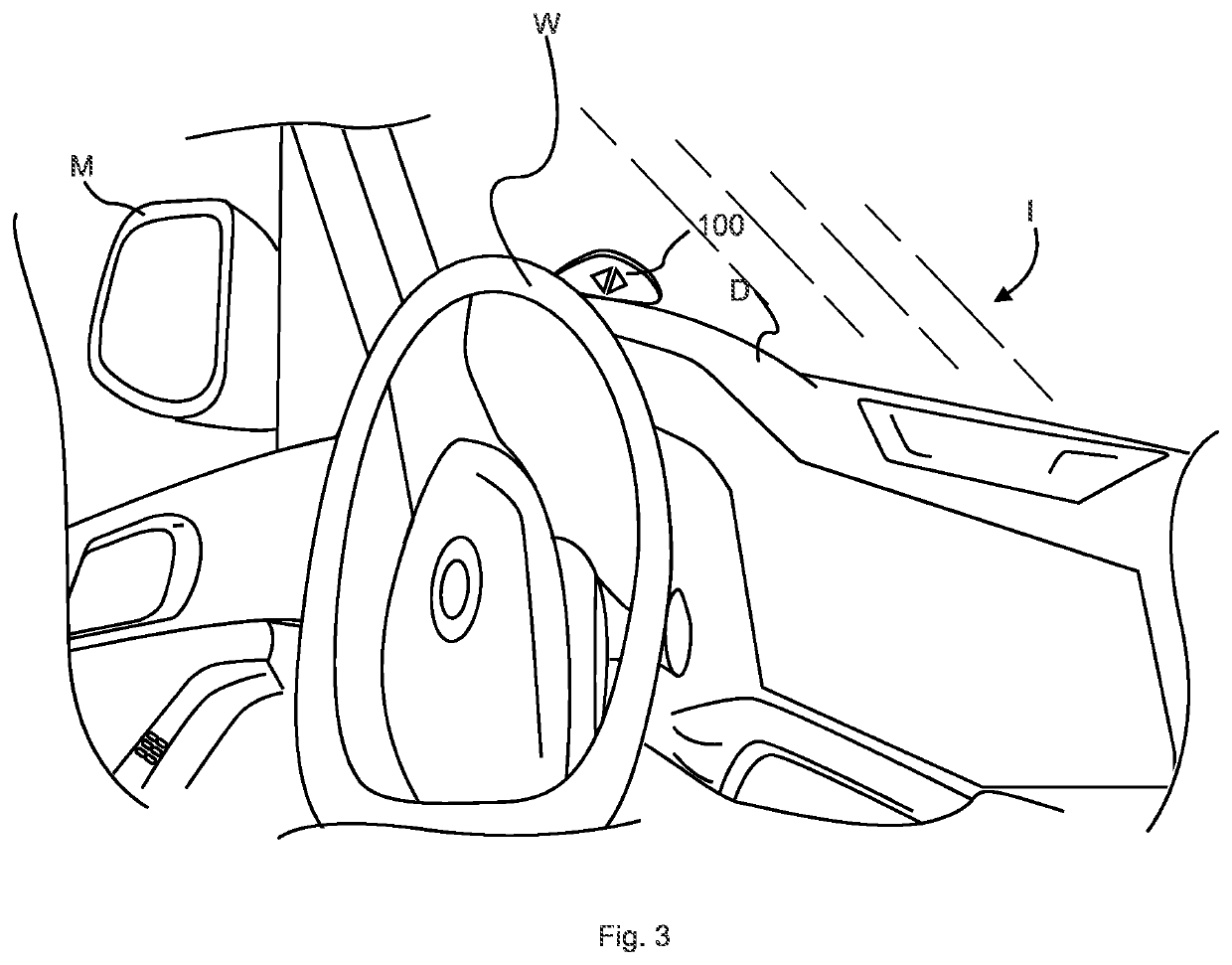Automobile safety light system and methods of use
a safety light and automobile technology, applied in the field of vehicles, can solve the problems of auto collisions, injury-related deaths, failure to use hands-free devices, etc., and achieve the effect of increasing motor vehicle safety and encouraging complian
- Summary
- Abstract
- Description
- Claims
- Application Information
AI Technical Summary
Benefits of technology
Problems solved by technology
Method used
Image
Examples
Embodiment Construction
[0027]In describing the exemplary embodiments of the present disclosure, as illustrated in FIGS. 1-6, specific terminology is employed for the sake of clarity. The present disclosure, however, is not intended to be limited to the specific terminology so selected, and it is to be understood that each specific element includes all technical equivalents that operate in a similar manner to accomplish similar functions. Embodiments of the claims may, however, be embodied in many different forms and should not be construed to be limited to the embodiments set forth herein. The examples set forth herein are non-limiting examples, and are merely examples among other possible examples. It should be noted that the term vehicle may be used herein as a descriptor for any motorized means of transportation. The term light, as used herein, shall mean any electronic device capable of illuminating.
[0028]Referring now to FIGS. 1-3 by way of example, and not limitation, therein are illustrated example...
PUM
 Login to View More
Login to View More Abstract
Description
Claims
Application Information
 Login to View More
Login to View More - R&D
- Intellectual Property
- Life Sciences
- Materials
- Tech Scout
- Unparalleled Data Quality
- Higher Quality Content
- 60% Fewer Hallucinations
Browse by: Latest US Patents, China's latest patents, Technical Efficacy Thesaurus, Application Domain, Technology Topic, Popular Technical Reports.
© 2025 PatSnap. All rights reserved.Legal|Privacy policy|Modern Slavery Act Transparency Statement|Sitemap|About US| Contact US: help@patsnap.com



